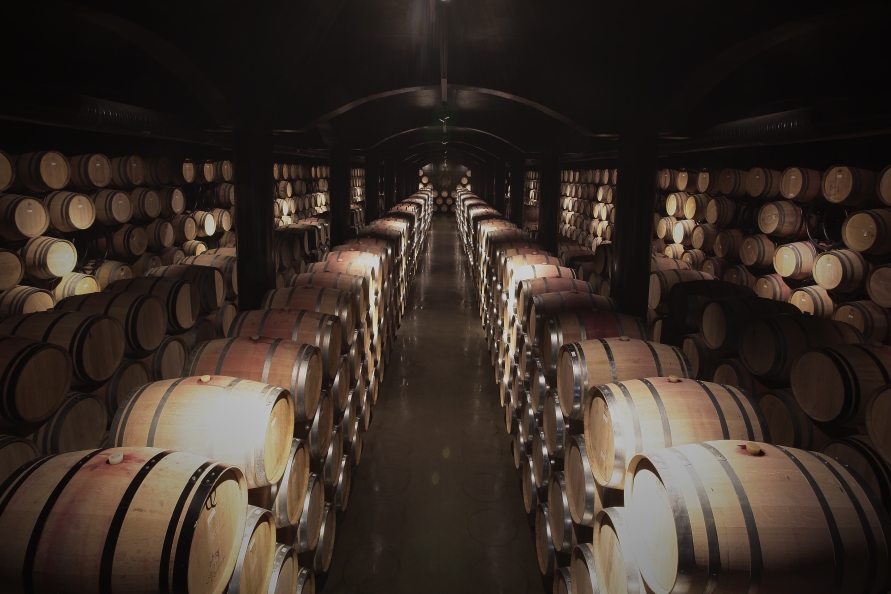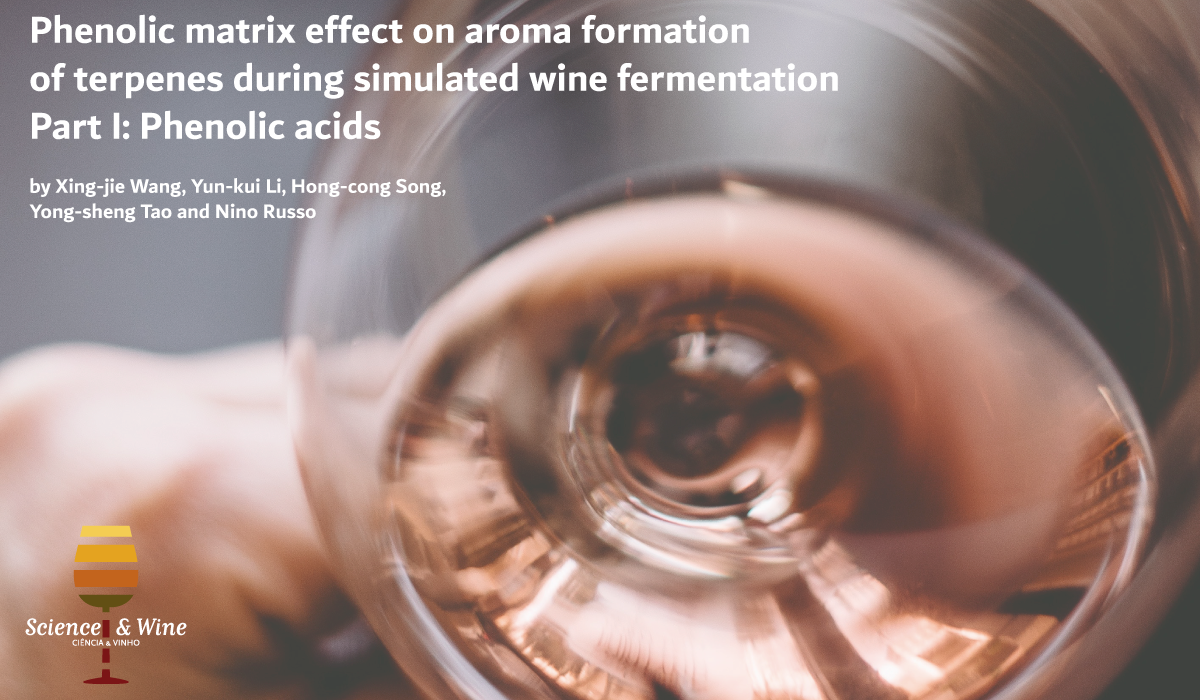By Xing-jie Wang, Yun-kui Li, Hong-cong Song, Yong-sheng Tao, Nino Russo
There are more than 1000 volatile components in wine, contributing to aroma. And it has been proved that non-volatile substances of wine, such as polyphenols, polysaccharides and proteins have large influence on the release and perception of aroma compounds, which is called matrix effect. Polyphenols, are a main part of non-volatile matrix with about 5 g/L in red wine, can be chemically divided into flavonoids, such as flavonols, anthocyanins and flavan-3-ols possessing a C6-C3-C6 skeleton, and non-flavonoids, mainly phenolic acids having a C6-C3 skeleton for hydroxycinnamic acids and a C6-C1 skeleton for hydroxybenzoic acids. In wine, a homogeneous multi-component mixture, the phenolic matrix effect is deemed to perform effectively through physicochemical interactions between polyphenols and aroma compounds. Previous related studies have intensively explored in at least four aspects: i) Influence of aroma compounds and polyphenols on phenolic matrix effect. ii) Impact of solution system on phenolic matrix effect. iii) Methodology and techniques to show phenolic matrix effect. iv) Working mechanism of phenolic matrix effect.
However, the mechanism of phenolic matrix effect on wine aroma revealed by previous reports is an effect on the existing form of aroma compounds via physicochemical interactions under a situation of equilibrium gas-liquid partition, which further affects the physical volatility and chemical transformation of aroma compounds. Whereas for the formation of terpene compounds, typical varietal aroma compounds hydrolysed from terpene glycosides (TGs) and an important contributor to fruity and floral aromas in young wine, the mechanism of phenolic matrix effect may be more complex, since the hydrolysis of TGs refers biochemical reactions under a condition of non-equilibrium fermentation. The phenolic matrix may influence the formation of free terpens by means of the impact on the yeast growth or the activity of glycosidases, which has never been recorded before and is definitely worth further exploring.
An alternative way to dissect the microscopic molecular interaction is the theoretical molecular modeling, including molecular dynamics (MD) simulation and quantum mechanical (QM) calculation. They can consider multi-body interactions among the mixed components and electron-level interactions between polyphenols and aroma compounds, providing a possibility for deep understanding phenolic matrix effect on aroma and its working mechanism. The theoretical approach has rarely been used to describe the interaction between polyphenols and aroma compounds, but has been adopted to study chemically similar systems: interactions between polyphenols and human saliva to understand interactions between polyphenols and anthocyanins to elucidate copigmentation mechanism.

We focus on the effect of phenolic acids matrix on the hydrolysis of TGs and on the formation of free terpene compounds during fermentation, which is highlighted in four facets corresponding to the forementioned four aspects: i) Two representative phenolic acids, gallic acid and p-coumaric acid, and seven terpene compounds were considered. ii) The formation of terpene compounds was monitored during alcoholic fermentation in non-equilibrium multi-component solution. iii) Sensory analysis and SPME-GC-MS analysis were employed to evaluate the phenolic matrix effect. iv) QM calculations were further carried out to verify a potential mechanism at molecular level that how phenolic acids affect the formation of terpenes. And our results showed that:
i) The addition of phenolic acids markedly affects the production profile and amount of seven free terpenes, and thus influences the tropical fruit, sweet fruit, small berry and floral aromas of wine. This phenolic matrix effect is quite dependent on the nature of phenolic acids and terpene compounds.
ii) The working mechanism of the phenolic matrix effect in wine should be the physicochemical interactions between phenolic acid and TGs or free terpene compounds, rather than the influence on the yeast growth or the activity of glycosidases. The interactions between phenolic acids and LAG suppressed LAG hydrolysis, while the interactions between phenolic acids and terpene compounds reduced the volatilization of terpenes.
iii) QM calculations verify that the stability of the complexes follows the sequence of p-coumaric acid/LAG > gallic acid/LAG > p-coumaric acid/linalool > gallic acid/linalool, mainly governed by HB and dispersive forces (Fig. 1). QM method may be a potent technique to uncover the structure-activity relationship, driving forces of the interactions between polyphenols and aroma compounds at molecular level.
iv) This work presents new knowledge about the matrix effect on typical varietal aroma compounds in multi-component solution during non-equilibrium fermentation process. It is further expected that the addition of phenolic acids after the hydrolysis of TGs may be better to preserve terpenes in wine solution.

Note: Blue, green and red indicate strong attractive interactions, weak interactions, and strong non-bonded overlap, respectively. Oxygen, carbon and hydrogen atoms are in red, yellow and white, respectively.
By
Xing-jie Wang1#, Yun-kui Li1,2#, Hong-cong Song1, Yong-sheng Tao1,2*, Nino Russo3
1College of Enology, Northwest A&F University, Yangling 712100, China
2Shaanxi Engineering Research Center for Viti-Viniculture, Yangling, Shaanxi 712100, China
3Dipartimento di Chimica e Tecnologie Chimiche, Università della Calabria, Arcavacata di Rende, CS, 87036, Italy
Reference
Wang, X. J., Li, Y. K., Song, H. C., Tao, Y. S., Russo N. (2021). Phenolic matrix effect on aroma formation of terpenes during simulated wine fermentation – Part I: Phenolic acids. Food Chemistry. 341, 128288. (https://doi.org/10.1016/j.foodchem.2020.128288)

Dr./Prof. Yong-Sheng Tao, PhD in viticulture and enology. Research currently working at the College of Enology, Northwest A&F University (https://wine.nwafu.edu.cn/szdw/bssds/260210.htm). Tao’s research area is focused on the wine aroma chemistry and its biochemical modulation technologies during winemaking process. He did post doctor at the Department of Agriculture and Food Science, University of La Rioja, Spain from 2008 to 2010, and did a senior Visiting Scholar at the Department of Food Science, Copenhagen University, Denmark from Oct. 2018 to Jan. 2019. He has presided over 10 national / provincial research projects in the field of oenology. He is author/co-author of 34 research articles in peer reviewed English journals and of 62 research articles in peer reviewed Chinese journals, and has attended as a speaker at various international and national scientific conferences.

